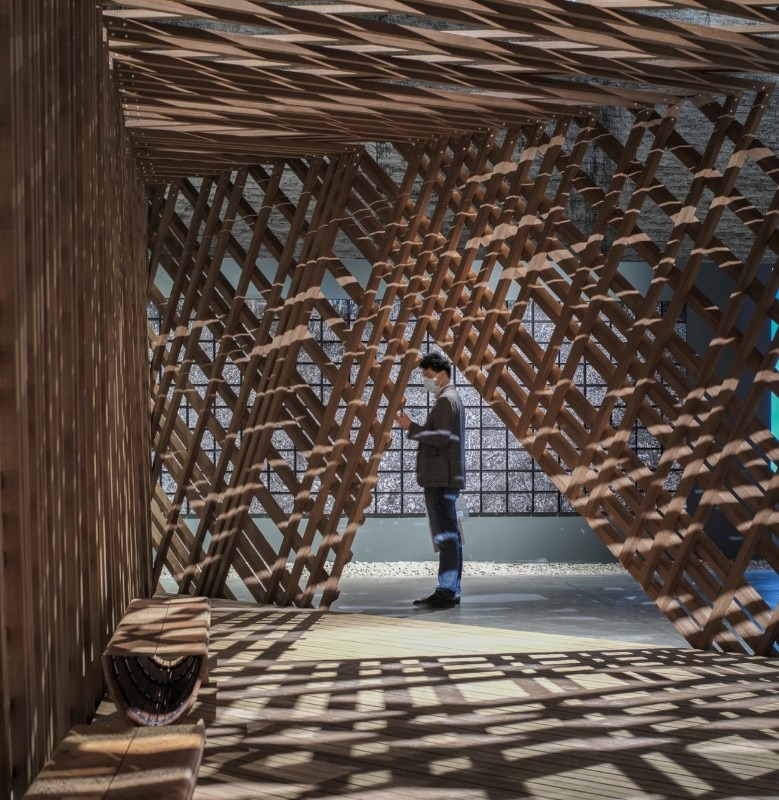Shortly after the opening of the Italian Pavilion, Davide Borsa wrote a humorous post on the ever-present risk of national unpopularity: “The Italian pandilion is at risk of extinction, it breeds only once a year in a protected wetland, while bothered by crowds of tourists. Grumpy and shy, it takes on different features depending on what it eats, which usually is leftovers and scraps; this explains its fundamental ecological role in protecting biological diversity”.
A little later, curator Davide Tommaso fired away from his trabaccolo moored at Punta della Dogana, which houses the temporary Unfolding Pavilion curated by him during the Venice Architecture Biennale 2021.
“Designing an exhibition that people do not understand is like designing a building that cannot stand”. Criticizing “Comunità Resilienti” - the title of the Italian Pavilion exhibition curated by Alessandro Melis - Ferrando continues: “Experimentation, intersectionality, transdisciplinarity, visionary imagination, coexistence, exaptation, vitality are all well and good [...] but if two years of work end up with the winners raising the trophy to the sky in front of a vaguely confused public, then something has gone wrong”. The chaos of the Italian Pavilion is explained as “part of the concept”, and Ferrando continues: “I’m sorry that not even this time, in the most experimental of the Italian pavilions, if you can even call it experimental, there was a hint of experimentation in the curatorial field”.
Soon, a scuffle broke out which led to a lively confrontation between admirers and opponents that also came to involve, among others, Emanuele Piccardo, Emmanuele Jonathan Pilia, Luigi Manzione, and Davide Tudor Munteanu, and that was covered and further analyzed by various newspapers and magazines.
Here’s the “hot” confrontation between Davide Borsa and Alessandro Melis on some of the contents of the Italian Pavilion at the Venice Biennale 2021.
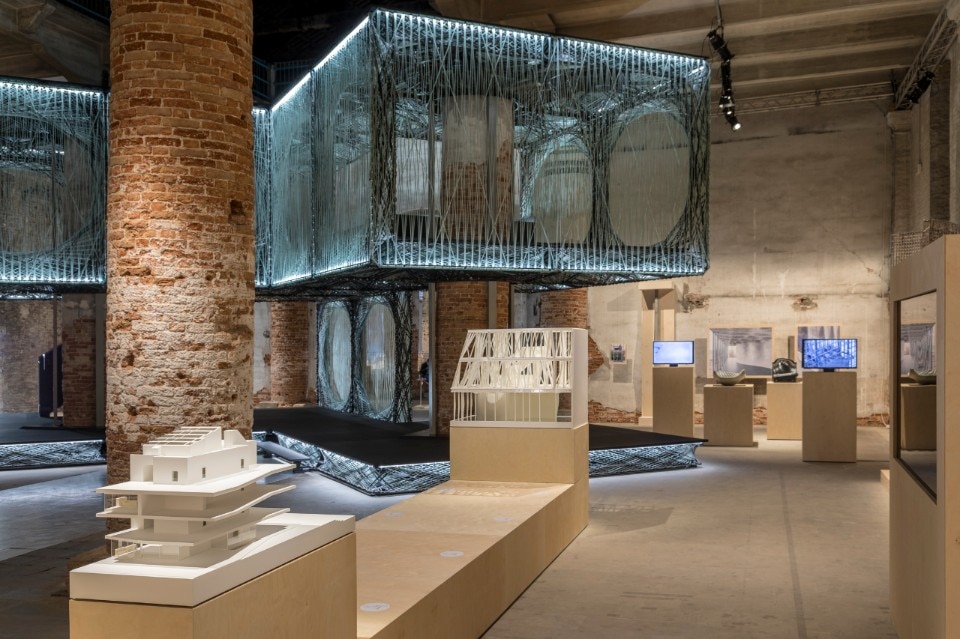
Davide Borsa: The job of a curator, especially when it comes to architecture, is tough. He who is without sin... but many stones have been cast. If the medium is the message, which is gloomy, fragmentary, chaotic, and labyrinthine, it tells more about you than you might have wanted. Let us add to the inevitable punishment that is carving one’s name into the hall of fame of those who have failed to conquer the Italian Pavilion a few questions, as we do not want to settle for those who have only said that it is ugly.
Alessandro Melis: In my opinion, the stones are always coming from the same place. In fact, authoritative voices in art and culture criticism such as Luca Beatrice and Pierluigi Panza have made positive comments. I have the feeling that some of the criticisms are a projective identification that proves that a part of the architectural world is simply self-referential. And certainly, that part of the architecture world cannot give in to those who point it out. It is easier to dismiss the exhibition with a joke and call others incompetent than to make the effort to call yourself into question.
If I represent darkness as an opportunity and the blue sky and light as the problem, and I am told that the exhibition is dark and dystopian, then perhaps it is worth discussing whether architecture, as it is understood today, is capable of representing the complexity of relationships or whether it merely represents clichés. I have a feeling that some architects consider confusion to be anything other than four white walls around an installation or as a support for the images of a project.
It is clear that the participants in this Italian Pavilion have, I hope happily, put aside their comfortable self-assertion to favour the unexpected uses of disorder, to quote Richard Sennett.
To put it in other words: the Italian Pavilion is indeed fragmentary, chaotic, gloomy, and labyrinthine, and the first section explains why: architecture can go beyond what we are told and what we perceive today. It is dark matter. But if you don’t want to read at least those two explanatory lines, it’s certainly easier to do things in a slapdash way and get it over with.
Of course, the Pavilion is also about me, my anxieties, and my doubts. Jacques Lacan was no fool! (a controversial 20th-century French psychoanalyst and philosopher, ed.).
However, polemics aside, the war among pavilions which sees the rebel Ferrando from the Unfolding Pavilion on one side and the Resilient Empire of the Italian Pavilion on the other seems to me a passionate Critic Archi Star Wars...
Who is the real rebel here? It seems odd to me to talk about an Empire in relation to the first time a curator has shifted the focus of the Pavilion from himself to the section coordinators and the participants.
I am also surprised that many people talk about participation, only to later complain that the diversity causes confusion. Here, I deserve some credit for having brought the supposed enemies together.
However, it would be difficult to present an in-depth critique on the basis of public approval, without risking to remind of Alberto Sordi and Anna Longhi’s Smart Holidays. However, Cesare Brandi (Italian art critic and essayist, ed.) insisted on the fact that the image is what it seems without mediation. There is a synthetic, intuitive aspect to the immediate perception of the display, even without needing to quote Kant’s “beautiful is what, without a concept, is liked universally”.
That’s exactly what I am saying. But if we keep seeing no further than our nose and we keep making judgements using obsolete architectural taxonomies, while we try to express the opinion that these are useless and harmful, then it is difficult to have a dialogue. If the problem was falling in the “snobbery” of Smart Holidays, then why were the reviews by non-experts and people under 30 years old positive? I wouldn’t be wrong: the pavilion was very well-received and understood by many. This proves the point about prejudice, not the other way around.
.jpg.foto.rmedium.jpg)
But there’s a high risk that by wanting to represent the universe, you end up representing only yourself.
This is like saying that Renaissance polygraphs ended up representing only themselves. Every environmental crisis forces an extension of taxonomies in a transdisciplinary key. But what matters is associative thinking, not knowledge. It is not a matter of talking about everything in a specialist way, it is a matter of creating new associations on which to build new taxonomies.
Nevertheless, there’s still the fact that ecology, at least in Italy, from the Land of Fires to the eco-bales, holds some sad records. We are still in the middle of a transition, albeit an ecological one (and we have failed in achieving practically all our objectives). In short, there are still many steps to be taken, as the title of Gregory Bateson’s famous essay Steps to an Ecology of Mind states, and skepticism is in order because there was enthusiasm for a revolution that has not kept its promises. The book dates back to 1972: when the return to resilient villages is called for, it is as if a sorcerer were called in to cure Ebola. The prediction of a happy marriage between science, politics, and social conscience seems to me more a matter of faith than a scientific fact.
That is as far from reality as it gets. The fact that I failed because I represented myself is precisely your reading, a reification that dramatically highlights that this consideration is being demolished by all the possible contradictions in the way the Italian Pavilion has been conceived, received, and interpreted to date.
The regulatory framework, for both architecture and the environment, also seems to be slowly and inevitably sliding towards simplification. Rather than the thoughtful and profound Richard Feynman, Jay Gould, or Michael Hofstadter, today the characters that achieve more consensus are those who evoke Ozymandias from Watchmen, who unleashed an atomic war to stop the Cold War, i.e. the principle of collateral damage. Or worse, sinister figures like Lex Luthor, the decision-making scientist, saturated with exalted hedonistic narcissism, or the social Darwinism of Dr. Strangelove.
I certainly did not talk about resilient communities as a cure for Ebola. I talked of Ebola as a symptom of the environmental crises, that’s true. But not as a metaphor. And I also explained what the possible (positive) contributions of that harrowing confrontation between politics and science were. But it seems to me that even in this case, it is easier to claim that I am saying the opposite of what I am saying. And when I point this out, I am told that then the message is not clear and I am not a good editor. If that is the case, it means that I am wrong in one sense, and also in the other. I succeed in the impossible.
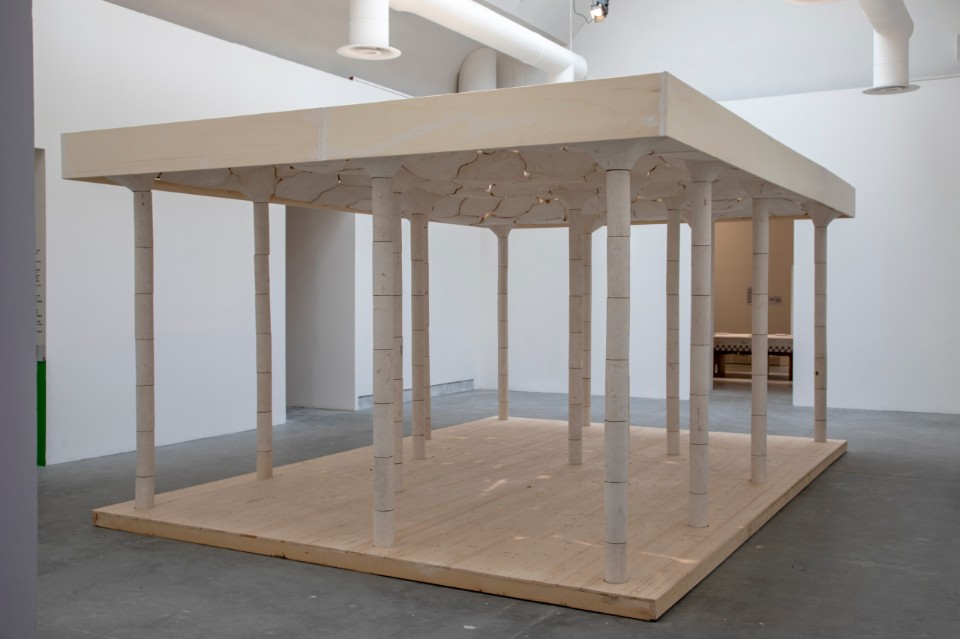
Andrea Inglese warns us that “consumerism is the closest thing to heaven on earth that working-class people have ever known”, while Walter Siti says that “Resistance is useless”: nevertheless, Frampton still urges us to fight for freedom of critical thought and autonomy of artistic research, in the name of the renewal of the modern project of social and cultural emancipation. Are we really ready to move towards resilience when disciplinary autonomy is at stake?
Architecture has lost its power of holding a strong symbolic signification, advocated by Modernism, diluted in the new media. In reality, “speculative”, development models still triumph, supported by the narration of a bland, scientific, neo-Fordist utopia of the smart city and the heresy of skyscrapers, while the idea of the resilient community is too reminiscent of Adriano Olivetti's “anti-capitalist” minority project, and the criticism of growth models echoes Antonio Cederna (with his denunciations of building speculation) and Francesco Rosi (with his 1963 film Hands over the city).
The late-capitalist imagination haunted by financial marketing and the hammering propaganda of neo-liberal ideologies, for which it is not a problem to turn Arcosanti into a theme park for snobbish freaks, does not seem to me to be threatened by non-profit organisations, active citizenship, happy degrowth, eco-museums, eco-friendly communities, sustainable agriculture, and bio-architecture.
We certainly agree on one thing: embracing complexity without simplification. I would start, in general, from the heuristic value of recent evolutionary biology for architecture. In addition to the positions and principles and also the similarities with other projects (which are there and in which we recognise ourselves), we are trying to spark a discussion on a possible extension of the taxonomy of architecture.
A new taxonomy like the all-encompassing one suggested by Patrik Schumacher, condensing everything in the “tectonics”?
I don't agree with most of what Schumacher says in the newspapers and in his writings. We often have conflicting opinions. My interest in ZHA is more about the proliferation of redundant, diverse, and variable forms and the inability of the conservatives of autonomy to read and understand their potential functionalism. The fact that the most representative woman in contemporary architecture is always being blamed for even the littlest things, while at the same time the Savonarolas of autonomy are treated with great indulgence, is in my opinion a clear sign of the need to overcome a certain critical automatism that can still be found in architecture and in a few other disciplines.
Returning to taxonomy, as Stephen Jay Gould and Michel Foucault used to say, overcoming the binary and reified vision of the autonomists, in this case, does not mean discovering or highlighting anything new. We are not proposing anything new. It is simply a matter of taking note of the fact that the words emptied of meaning and used as buzzwords are not only “resilience” and “sustainability”, but also “architecture”, “order” and “rationalism”. This is another projective identification on the part of the critics of words who, however, get immediately defensive as soon as their buzzwords are questioned.
.jpg.foto.rmedium.jpg)
Aldo Rossi and Giorgio Grassi are certainly the forerunners of a puritanical attitude, of a metaphysical dimension, taken up by Dogma and the theorists of autonomy: is this a ‘projective identification’, too?
The biggest craze now is to use the word architecture to describe a rather limited expression that has very little impact on communities and people, and that is practised by a limited number of white males in their 50s or 60s, mostly westerners like me. Another trend is to say that anything that challenges this tragic trend is a trend. Of course, it is only the members of the elite club of architecture who criticise words like “resilience” as a question of principle. The others question the appropriate use of terms depending on circumstances and research. But this takes a lot of effort and does not serve to defend one’s opinion, whatever it takes. What I am trying to say is that, for example, if 20% of the built environment is architecture that was ‘designed’ according to the criteria of determinism (the only ones recognised by autonomy), and 20% of the settlements are slums, perhaps it would be more interesting to try to understand what the hell this 60% of built (or unbuilt?) fabric is that regulates our relations with the troposphere.
According to some, it is not architecture, even though it is not studied by any other discipline. Fine, let’s give it a random name: Beppe? Beppe it is. After that, to defend the 20%, I wouldn’t call the work of those who deal with Beppe a trend. Otherwise one might think that rather than a way of defending architecture, it is a way of justifying one’s privileged role
It is also true that there is nothing more resilient than architecture, from the ecomonster of Punta Perotti, the Vele di Scampia, the Zen in Palermo, to the regional government buildings springing up like mushrooms: these are transformations that are largely irreversible and scarcely adaptable.
Indeed. That is why, in ecology, those architectures are called “resistant” and not “resilient”.
But there is another problem here: in ecology and in the social sciences, the terms take on opposite meanings.
Creating rigid barriers, compartmentalising, and raising the level of the cities as a response to rising seas are ecologically “resistant” solutions. An amphibious transformation of an extensive coastal strip that promotes a positive and reconfigurable transformation of the strip is a “resilient” solution. This is why I talk about taxonomies. Otherwise, we spend our time just squabbling over terms, improperly attributing thoughts to people that have not thought that.
Do you think it is necessary to clarify what is part of the ‘job and what is not?
Sure. How many times have we heard “I am against resilience because I am for resistance?” To be clear: one can be in favour of partisan resistance and be a scholar of resilience in ecology at the same time.
But traditionally, at the heart of the discipline lies scientific knowledge such as construction science, not molecular biology or organic chemistry.
Maybe not molecular biology. Not yet. But are you sure that the focus of the profession today is not fluid dynamics rather than construction science?
I understand that you consider certain paradigms that can be found in schools and in other disciplines to be obsolete and outdated. Traditions of studies that have lost their heuristic value. But isn’t architecture taught well there?
This is what I am referring to when I talk about extending the taxonomy. I teach climate design at the University of Portsmouth, which is a public university in England. Fluid dynamics is an essential tool in design. Climate and fluid dynamics applied to cities and architecture are actually very ancient disciplines if you look at history in an ‘alternative’ way. Just think of the historical Iranian city. Perhaps these and other subjects are not taught too often in Italy, yet, because we are perhaps too concerned with preserving certain roles and privileges instead of interpreting the crisis.
Does it suffice to move the emphasis away from construction science and towards materials science to make a revolution?
No. But it could be a small step towards a revolution.
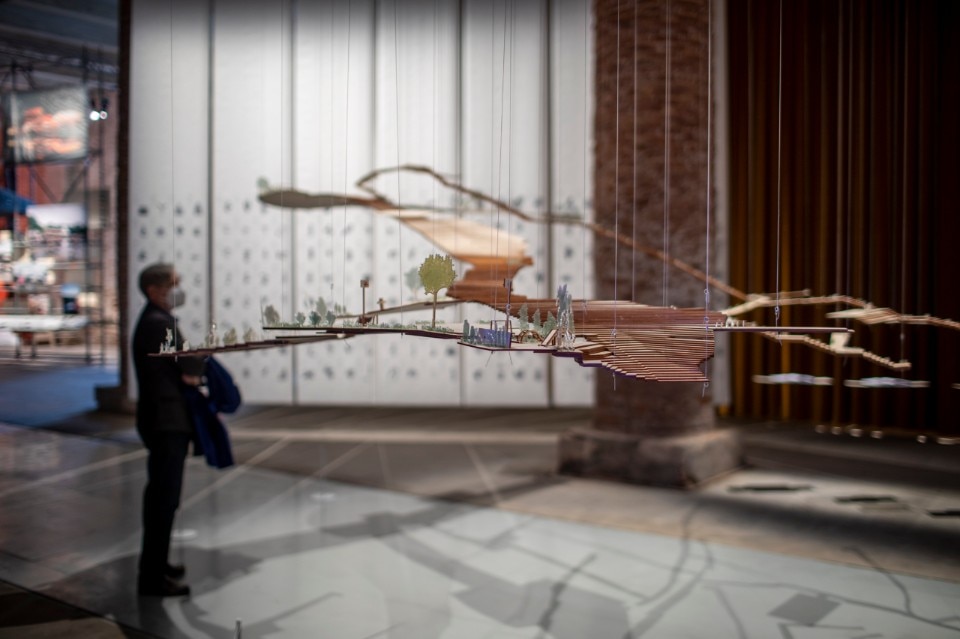
Is this the end of concrete as a paradigm of modernity? This foundation was never questioned even when an organic-biological model was adopted, even if only on morphological grounds (Frank Lloyd Wright, Erich Mendelsohn). Often, in art and architecture, the prevailing model of transmission is imitation and taste rather than research, with the risk of indolently abandoning oneself to the backwardness of a reactionary image entrenched in late-Fordist-international-fusion-style positions, with a green eco-chic touch that is really hard to swallow.
Totally. This is an ever-present risk. This is why we are not trying to do anything new, but we’re only trying to give value to experiences that have perhaps been too easily dismissed as ‘solitary’, radical, utopian, visionary, and of minority interest in mainstream aesthetics. And maybe even ‘ugly’, if we want to use the traditional categories of judgement. It is also clear (to overcome certain disciplinary barriers) that there is still a big problem in the way the Italian university selects and promotes recruitment and guides research.
The Community Movement founded by Adriano Olivetti, but also Tolkien’s hobbits, the Star Wars rebels, and the Fremen from Dune are examples of resilient communities. In architecture, the biological-holistic utopia has a great minority tradition. Christopher Alexander’s 1967 essay a City is not a Tree seems to define a kind of non-binary urbanism, while A Pattern Language: Towns, Buildings, Construction was published in 1977. Since Semper’s evolutionism, the theory has always pursued the integration of architecture, new sciences, and the principles of ecological universalism, clashing with the Luddite limits of the organisation of work and production.
I find the reference to “a city is not a tree” very interesting, because in his essay, perhaps unwittingly, Alexander lays for the first time the foundations for a discussion on exaptation in the field of architecture. When he distinguishes between artificial cities and “semilattice” structures, he actually supports the idea that in architecture, as in evolutionary biology, indeterminism, or disorder, as Sennett would say, through the increase of interconnections favours the resilience of organisms, as it was demonstrated in the 1980s by Stephen J. Gould and Elisabeth Vrba, and more recently by geneticist Ewan Birney. The genome is a jungle populated by strange creatures; similarly, disorder, imperfections, and relationships can constitute a pool of possibilities for cities transforming due to environmental crises.
With this, I want to reaffirm that today the most important thing is not so much to discuss new paradigms. It is more important to functionally co-opt and give the right value to positions that have emerged several times and have always been marginalised by the reactionary and ordering vision that has always governed the field of planning.
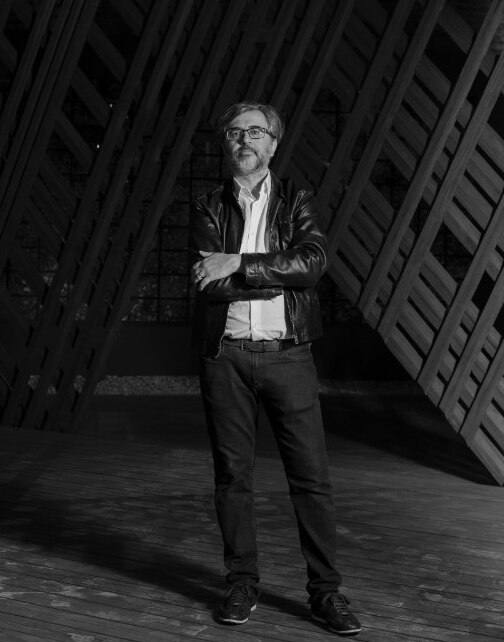
The reference to Fremen is equally effective, in the sense that their radicalism is closer to the change of the rules of the game that I would like to see today. The Fremen, in my view, go beyond Huxley’s metaphor of the chessboard, according to which nature and sentient beings are equivalent players. Overthrowing human arrogance and accepting the diversity and coexistence, or even symbiosis, with non-human species in an extreme environmental context, is crucial.
The political and social dimension of Olivetti’s community movement, of which I am an admirer, is inscribed in a precise historical phase of our civil evolution.
In the fantasy atmosphere of Hobbiton and in the western romanticism of the Star Wars Republic, I also see allegories of idealism, which, although as old as Plato, always belongs to the thousand years of civilisation. A lot, in terms of architectural history, and almost nothing, in terms of human evolution. Do the taxonomies of architecture that we know, meaning the associations we take for granted, still make sense? It is no longer a matter of being on one side or the other, but of playing a different game.
For example, according to palaeoanthropologist Heather Pringle, it makes no sense to distinguish between art, technology, and science. They are all three manifestations of associative thinking, a uniquely human way of thinking that is activated in crisis contexts and to which we owe the origin of creativity.
The distinction between these is based on a prejudice that has been somewhat useful as a tool for giving a taxonomic order to our society but is fundamentally useless for dealing with the complexity of the environmental crisis. From this perspective, even the views we hold on positions such as Luddism, or with respect to conventional dichotomies such as that between artifice and nature, are a bit like Newtonian physics before we discovered relativity. They are reifications, as Gould would say, which still work for everyday things, but which do not explain the anomalies of a larger and more complex system, which we can no longer ignore as the world is facing many global crises.
It is more important to functionally co-opt and give the right value to positions that have emerged several times and have always been marginalised by the reactionary and ordering vision that has always governed the field of planning.
- Opening image :
- Italian Pavilion. Architecture Biennale 2021. Photo Marco Menghi


